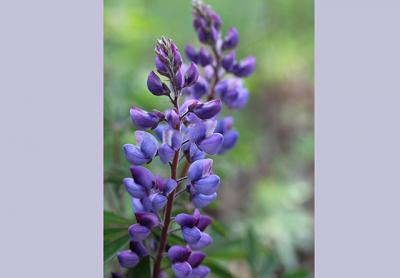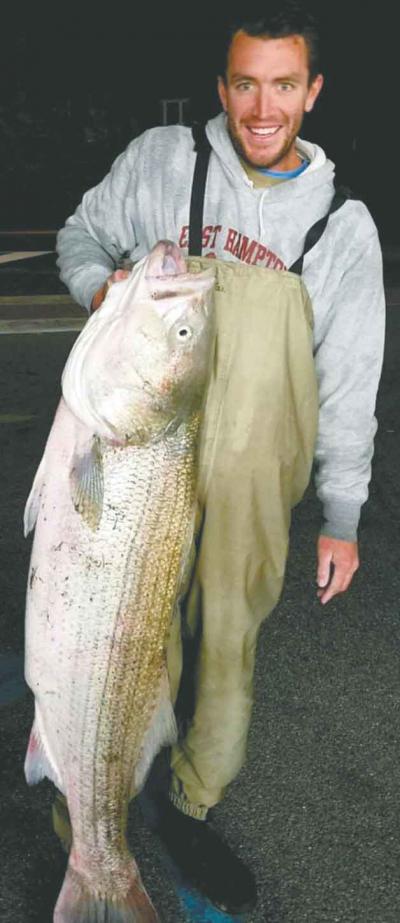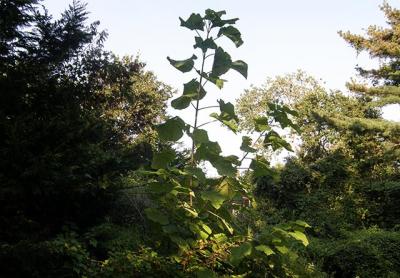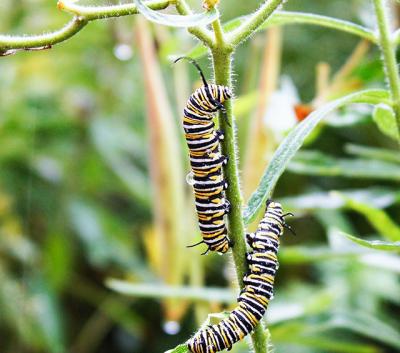When the Wind Blows
When the Wind Blows

Some like it hot. Some like it cold. When the thermometer rises or falls, we humans simply adjust a thermostat or add or subtract layers of clothing to achieve our personal comfort level. Fish don’t have that luxury and must skedaddle when the surrounding water temperature exceeds the range their cold-blooded bodies can tolerate.
Typically, fish migrate north when southern waters become too hot and push south when northern waters become too cold. Some species, like blackfish, move west to east as the mercury falls.
It’s important for fishermen to know what temperatures their target fish can tolerate, their local water temperature, and what factors determine water temperature.
Striped bass are happiest in water that ranges from 55 to 68 degrees. The unseasonably warm weather is keeping Massachusetts and Rhode Island coastal water temperatures above 60 degrees and western Long Island Sound temps near 65 degrees, according to National Oceanic and Atmospheric Administration buoy data, which is available online at ndbc.noaa.gov/obs.shtml. Until these waters dip into the mid-50s, anglers shouldn’t expect new bodies of baitfish and gamefish to pass our shores in large numbers. Fortunately, this can happen very quickly with a multi-day cold front combined with strong south or west winds.
Warm and less dense water sits on top of the ocean’s surface. Northeast winds push this warm water close to coastal shores, which keeps gamefish fat and happy where they hang. But south and west winds have the opposite effect. They push the warmer inshore water away from the coastline, producing an upwelling action where a pool of cold water holding at 50 to 60 feet below rushes up to replace the vacating warm water. Ever churn a hot bath with your hand to make it a little cooler? Same idea.
The contour of the coastal bottom will determine the extent of the water temperature mixing action, so different sections of the same shoreline can have different water temperatures. We’ve all noticed this peculiar circumstance while swimming or surfing at beaches. This small difference in temperature also can have a major impact on where fish congregate and how eager they are to eat, so anglers should prospect a beach if fish aren’t visible.
When waters dip and firmly remain below 55 degrees, it’s almost time to put away the pencil poppers and grab a half-bushel of green crabs to target the hard-fighting and tasty blackfish, which thrive in cold water as low as 45 degrees. As water temperatures plummet, these fish will move to deeper water. While tautog can be caught from a jetty under the right circumstances, productive fishing usually involves the use of a private or charter/party boat. Open season for blackfish runs until Dec. 14.
Those adept at anchoring over rock piles in gusty winds have been rewarded with bounties of blackfish. Areas around Plum Island, Fishers Island, and Rhode Island wrecks have been productive.
Capt. Merritt White reported catches of striped bass, bluefish, and false albacore by charters, but numbers were low toward the end of the week as tides weakened.
Paul Apostolides at Paulie’s Tackle in Montauk reported slow action under the Lighthouse, but ocean beaches were producing stripers and big bluefish for those putting in the time. Harvey Bennett at the Tackle Shop in Amagansett said that a female angler visiting from Delaware culminated a full day of surfcasting in difficult conditions with a nearly 40-pound striped bass at Hither Hills State Park at sunset.
Birds have been working along Georgica Beach jetties during daylight hours, but anglers haven’t had much luck finding fish there. Those looking for more of a sure thing along town beaches should set the alarm clock for an early wakeup or head out as the sun falls.
Sebastian Gorgone at Mrs. Sam’s Bait and Tackle in East Hampton said that one-piece rods were returning in two pieces after anglers tussled with mean and monstrous bluefish in Accabonac Harbor. Rods were faring better against stripers at Sammy’s Beach, Gorgone added.
Ken Morse at Tight Lines Tackle in Sag Harbor said the wind kept boaters at the dock while some surfcasters had luck on Southampton beaches.
The Viking Fleet reported sea bass and porgy action around Block Island. Federal waters, those beyond three miles off Montauk Point, are again open for sea bass.
There have been no changes to the Montauk SurfMasters Fall Classic leader board according to the tourney’s website.
The Star’s fishing columnist can be followed on Twitter, @ehstarfishing. Photos of prize catches can be emailed to David Kuperschmid at fishreport@ ehstar.com.






